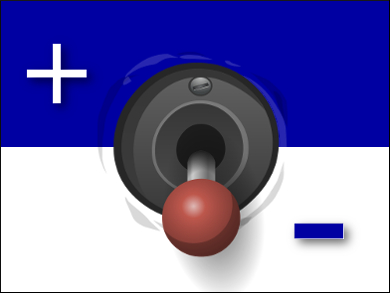Optoelectronic devices like solar cells rely on charge separation materials, typically based on doped semiconductors. The practical doping concentration limit of these materials is often less than one site per cubic nanometer, which precludes their use in nanoscale charge separation devices.
Exposing nanocrystals of semiconductors like CdSe to light creates electron-hole pairs with known spin states. The amount of electrical current transmitted through helical chiral molecules like polyalanine is spin-dependent at ambient temperatures. Yossi Paltiel and colleagues, Hebrew University of Jerusalem, Israel, paired the two to produce a system where charge transport depends on the sign of the charge, the direction of the current, the polarization of the light, and the handedness of the chiral molecule.
The researchers demonstrated that the current response observed over a range of voltages is four orders of magnitude greater for polyalanine capped with CdSe nanocrystals than for the polyalanine alone. Illuminating the helix-nanocrystal system with light energy above the band gap produces a response two orders of magnitude greater than for wavelengths below the band gap.
- Nanoscale Charge Separation Using Chiral Molecules,
Nir Peer, Irene Dujovne, Shira Yochelis, Yossi Paltiel,
ACS Photonics 2015.
DOI: 10.1021/acsphotonics.5b00343




